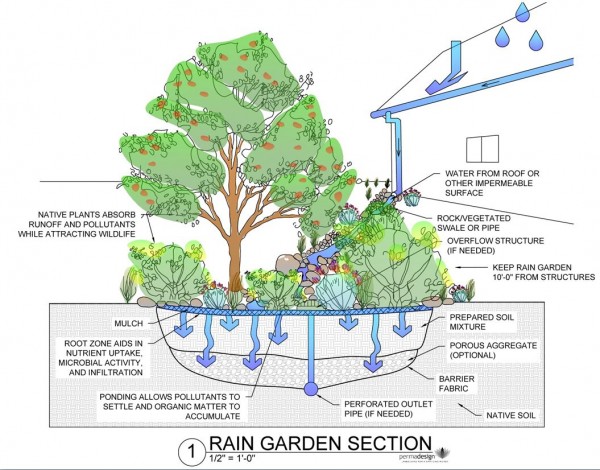The PermaDesign Weblog, with Nate Downey and Melissa McDonald!
Biophilia? I feel ya
The word “hydrophilic” has bounced around since 1901. Hybridized from the Greek roots for water (hydro) and love (philos), it means, “Possessing an affinity for water.” Regular readers of this column may recall references to hydrophilic soils, plants, and water-harvesting techniques. But please don’t worry if you’re new to this. You don’t have to be a permaculture practitioner or an etymologist to understand this month’s topic, biophilic design.
From biography and biology, we know that “bio” means “life.” Biophilic, therefore, means possessing an affinity for other forms of life. Harvard entomologist and universally renowned biologist E. O. Wilson coined the noun “biophilia” in 1984 to present his hypothesis that human beings have an instinctual affection for the natural world.
Having worked closely with Wilson, Yale professor of social ecology Stephen Kellert was part of a team that edited a 2008 book called Biophilic Design: The Theory, Science, and Practice of Bringing Buildings to Life. With a new book, Nature by Design, to be published by Yale University Press in 2017, Kellert is one of the keynote speakers at the Sept. 15-18 Santa Fe conference of the Association of Professional Landscape Designers. Check out http://www.apld.com for conference information. (Full disclosure: your faithful “Permaculture in Practice” columnist will be speaking there, too.)
As it turns out, the science is pretty clear: People heal faster, work more effectively, learn more, and feel better when nature is used to soften our homes, workplaces, civic spaces, and landscapes. Our Cartesian world of fences, walls, roads, utility boxes, and neighbors’ right-angled windows provide many conveniences, but when these rigid artifacts can be visually deleted and replaced by a splash of life, people really dig it.
Always wanting to give you, dear reader, wisdom directly from the source, I tracked down Dr. Kellert via what might be called — but never is, nor ever will be again — telephonophilia.
“I’m a great believer in the benefits approach,” Kellert, told me, “I don’t see biophilic design as a dispensable amenity. It’s about our functioning as human beings. If a project can’t demonstrate its efficacy in terms of health and human wellbeing, then I don’t think it has the persuasive value that it needs to have in order to embody biophilic design.”
The Tweedy Ordway Professor Emeritus from Yale’s School of Forestry and Environmental Studies went on to estimate that construction costs increase in the neighborhood of 10 percent when biophilic design is applied to conventional construction. “But worker retention and recruitment, enhanced learning, fewer sick days, and a generally congenial environment can certainly provide a significant return on investment,” he said.
Compared to permaculture, biophilic design tends to focus less on food and energy production outside a given structure and more on user experiences inside the built environment. Within the galaxy that is permaculture’s method of design known as “zonation,” biophilic design provides a solar system of support for the importance of a healthy and life-filled zone 1, a zone that permaculture landscape designers tend to overlook too regularly. I feel ya, biophilia. Thanks for the reminder.
08/19/2016 | (2) Comments











Comments
So what does this mean for those of us without a background in science or chemistry? Just that there are a number of benefits to observing nature’s patterns—whether it is the growth of flowers, the formation of trees, or the life cycles of birds. The goal is to simply appreciate some design concepts from nature and apply them within our human-made structures. Why? Because they make us feel good. They make us happy. And isn’t that what we are all looking for anyway?
So, what does this mean for those of us without a background in science or chemistry? Just that there are a number of benefits to observing nature’s patterns—whether it is the growth of flowers, the formation of trees, or the life cycles of birds. The goal is to simply appreciate some design concepts from nature and apply them within our human-made structures. Why? Because they make us feel good. They make us happy. And isn’t that what we are all looking for anyway?